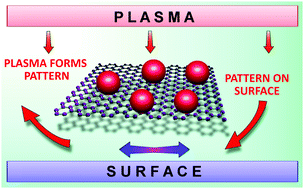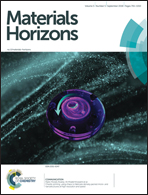From nanometre to millimetre: a range of capabilities for plasma-enabled surface functionalization and nanostructuring
Abstract
Driven by the innate tendency of the system to attain a local energy minimum, self-organization enables the creation of complex systems out of relatively simple parts and elements. The ability to form hierarchical, multicomponent systems that may be difficult, or even impossible, to fabricate using pre-set, template-enabled processes makes self-organisation very attractive for the synthesis and assembly of advanced material systems across multiple length scales. Yet, driving and controlling such self-organisation processes is not a trivial task as they often arise from a complex interplay of physical and chemical processes. These in turn depend on the environment in which self-organisation takes place. In this topical review, we focus on one such environment and outline unique opportunities, salient characteristics and challenges presented by self-organization on surfaces exposed to partially ionised gases, i.e. plasmas. Using a select number of recent examples, we aim to show how salient features of plasma environments, particularly high fluxes of energy and matter from the plasma to the surface, enable functionalization and growth of complex nanostructures and metamaterials via self-organization on plasma-exposed surfaces. We will show how by controlling different physical and chemical parameters of the plasma environment and how it interacts with surfaces, it is possible to control self-organization processes at multiple length scales, making it a promising enabling platform for nanosynthesis. We will discuss examples starting from the self-driven growth of perfect crystalline lattices, such as nano-diamonds and graphenes at the nanoscale, all the way to template- and pattern-free synthesis of large, highly ordered arrays of nanostructures at millimetre and even centimetre scales. We will outline the key enabling features of plasmas that drive these processes at respective scales, focusing predominantly on plasma-induced electric fields at the surface or in the plasma-nanostructure sheath, as well as charge-related effects. The outlook section summarizes advantages of plasma-driven self-organization, and outlines principal challenges and opportunities for the development of this field.



 Please wait while we load your content...
Please wait while we load your content...